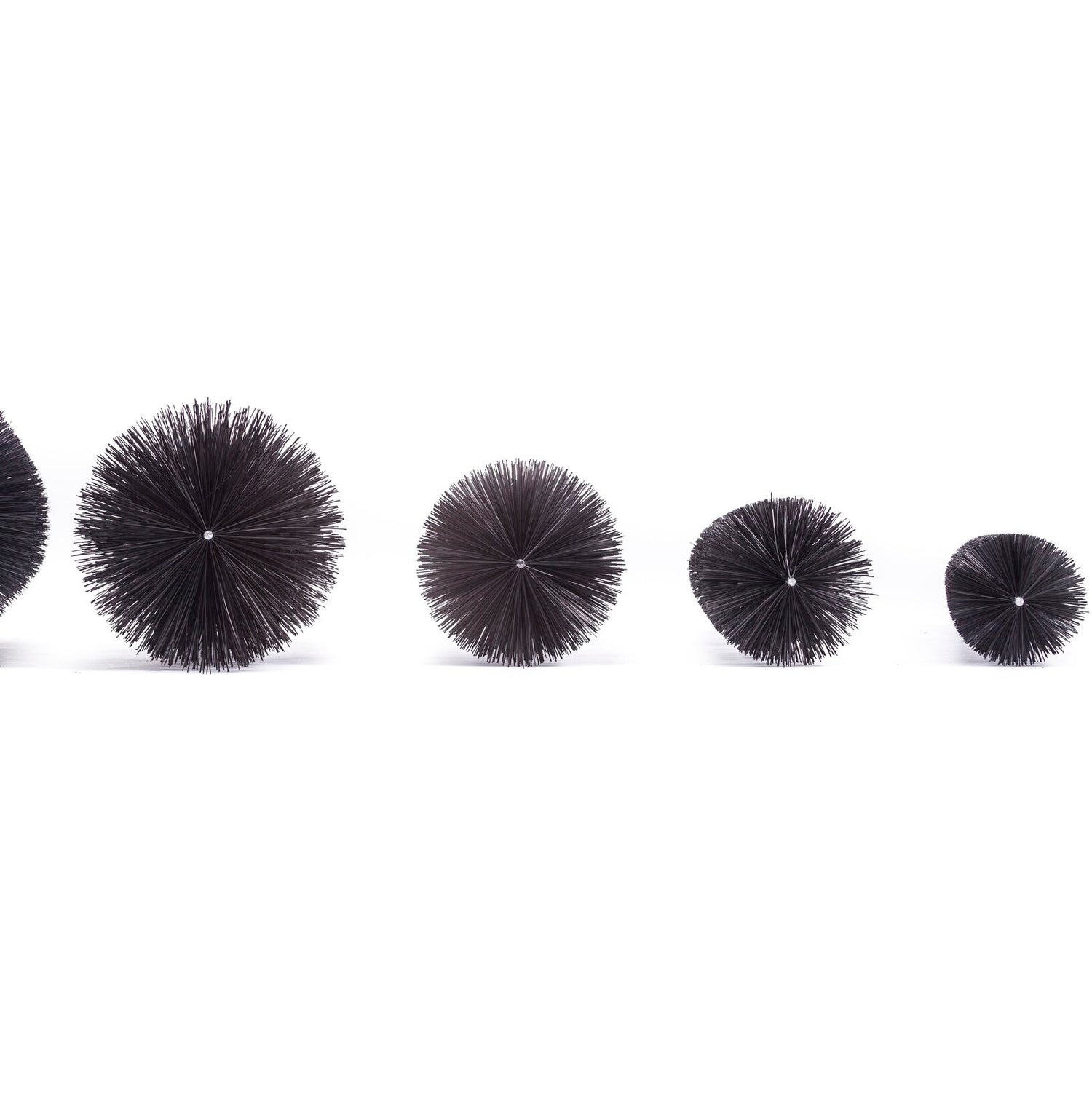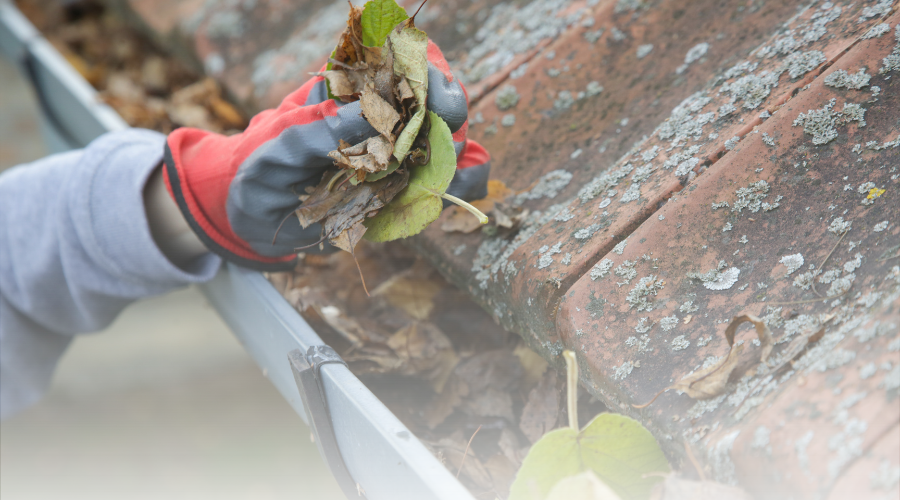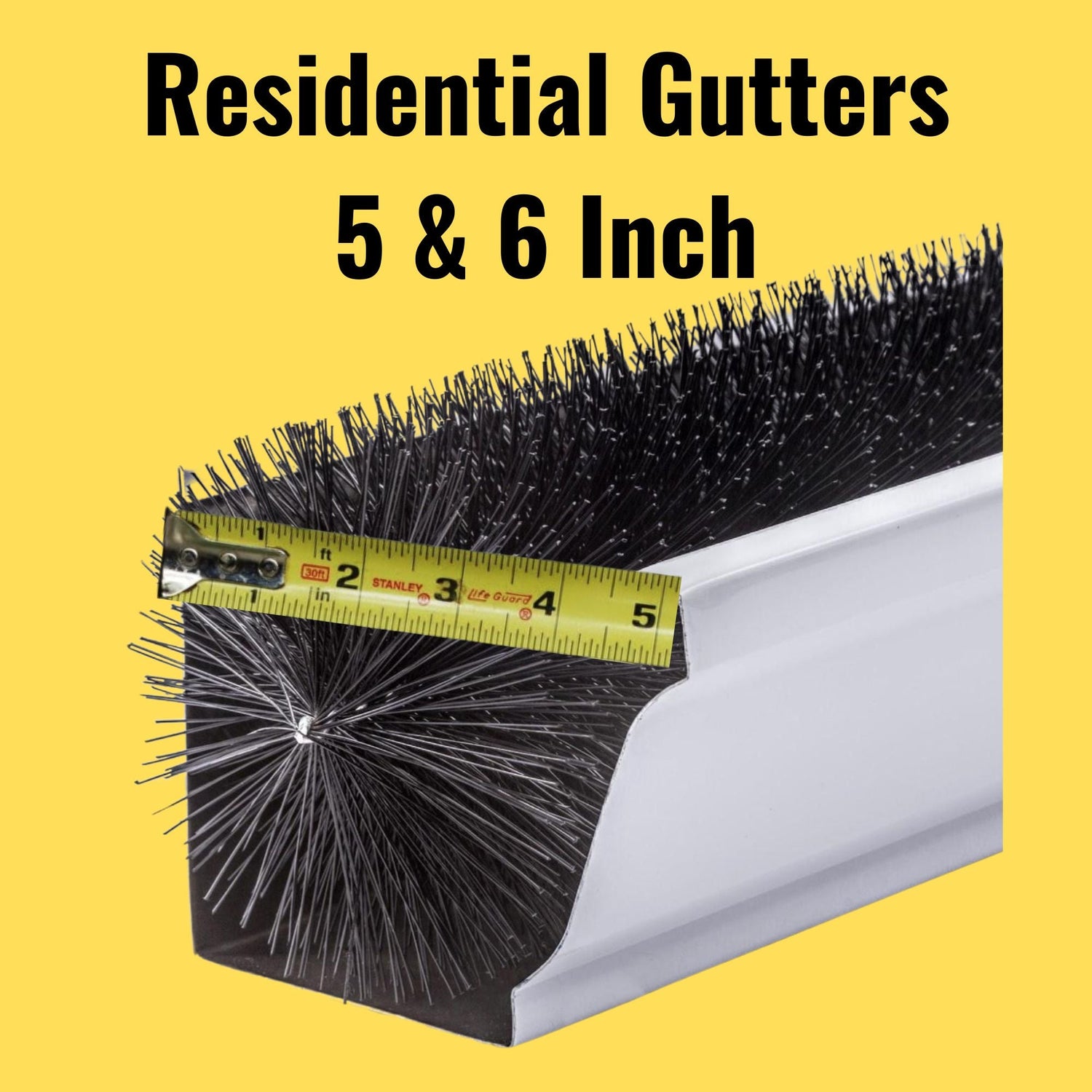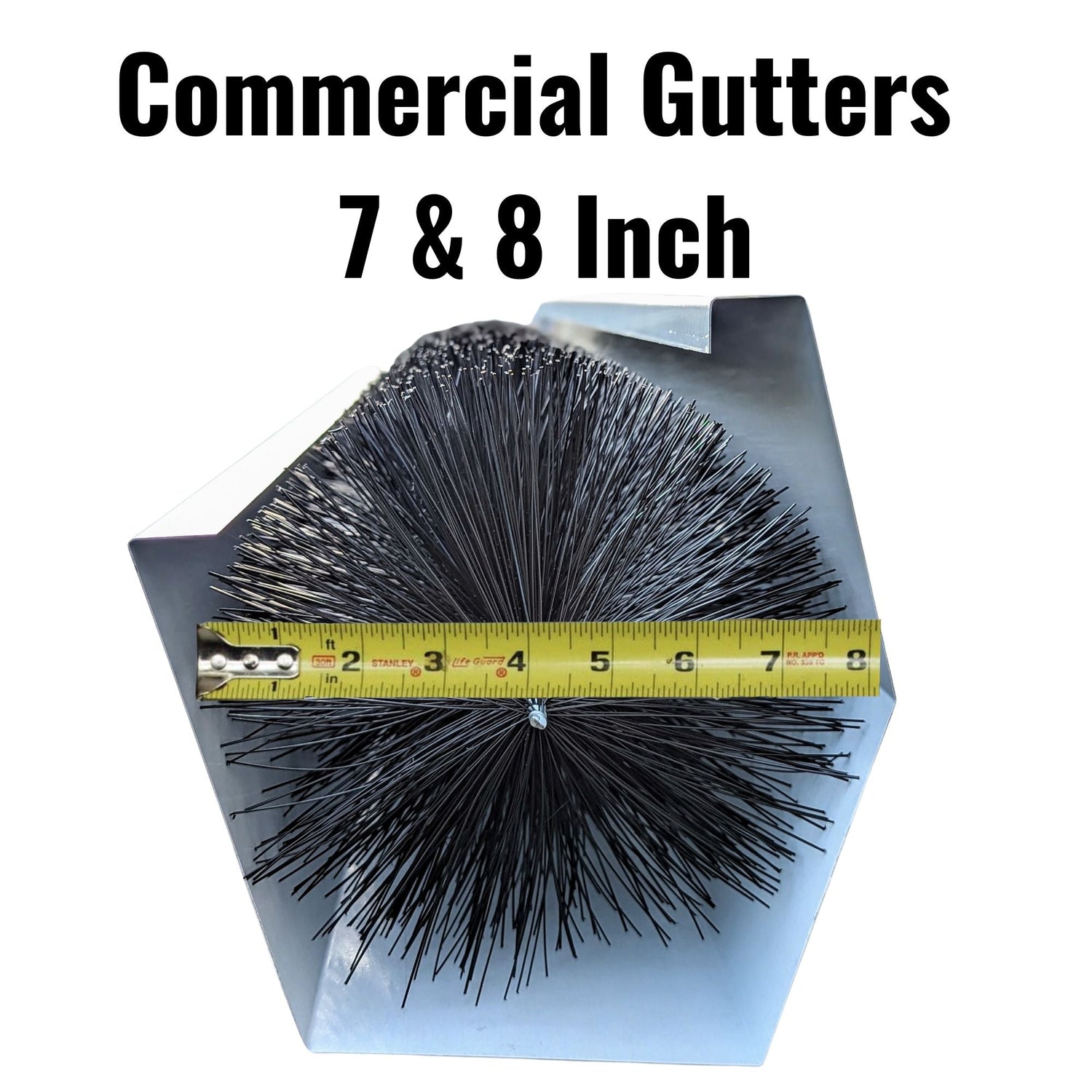Maintaining clean gutters is crucial for the longevity of your home. Clogged gutters can lead to water damage, mold growth, and even structural issues. Knowing how to tell if your gutter is clogged can save you from costly repairs. This guide will help you identify the signs of a clogged gutter and provide tips for keeping your gutters clean and functional.
Why Gutters Get Clogged
Before we dive into the signs of a clogged gutter, it's important to understand why gutters get clogged in the first place. Gutters are designed to direct rainwater away from your home, but they often collect debris such as leaves, twigs, and dirt. Over time, this debris can accumulate and block the flow of water. Here are some common reasons why gutters get clogged:
- Fallen Leaves: Trees shed their leaves, especially in the fall, and these leaves can easily find their way into your gutters.
- Twigs and Branches: Wind can carry twigs and small branches into your gutters, where they can get lodged and cause blockages.
- Dirt and Shingle Granules: Roof shingles shed granules over time, and dirt can be washed into your gutters by rain.
- Bird Nests and Pests: Birds and small animals can build nests in your gutters, obstructing the flow of water.
Signs of a Clogged Gutter
Recognizing the signs of a clogged gutter early can help you take action before serious damage occurs. Here are some indicators that your gutters may be clogged:
1. Overflowing Water
One of the most obvious signs of a clogged gutter is water overflowing from the sides during a rainstorm. When water isn't flowing through the downspouts as it should, it will spill over the edges. This gutter overflow can cause significant damage to your home's exterior and foundation. The excessive water can lead to:
- Siding Damage: Prolonged exposure to overflowing water can cause the siding of your home to rot and deteriorate.
- Foundation Problems: Water splashing and pooling around the foundation can cause cracks and destabilize the structure.
- Basement Flooding: Overflowing gutters can direct water into your basement, leading to flooding and water damage.
2. Sagging Gutters
Gutters that are weighed down by debris and standing water can begin to sag. This sagging indicates that your gutters are struggling to support the extra weight. If you notice that your gutters are pulling away from your house or appear uneven, it's a clear sign that they are clogged and need cleaning. The potential consequences include:
- Structural Damage: Sagging gutters can pull away from the house, damaging the fascia and potentially leading to costly repairs.
- Gutter Breakage: Over time, the added weight can cause the gutters to crack or break, necessitating replacement.
3. Plant Growth

If you see plants or grass growing in your gutters, it's a sure sign that they are clogged or soon will be. Seeds can find their way into the debris in your gutters and start to grow, further blocking the flow of water. Plant growth in gutters can lead to:
- Increased Blockage: Growing plants can trap more debris, exacerbating the clog.
- Root Damage: Roots can potentially damage the gutter system and the roof, leading to leaks and water damage.
4. Staining on Siding
Water overflowing from clogged gutters can cause staining or streaks on the exterior walls of your home. These stains are often dark and can be difficult to remove, indicating that water is not being properly channeled away. The stains may result in:
- Aesthetic Issues: Unsightly stains can decrease your home's curb appeal.
- Moisture Damage: Prolonged moisture exposure can cause the siding to rot, deteriorate and become infested with bugs.
5. Pest Infestations
Clogged gutters can attract pests like birds, rodents, and insects. These animals may build nests in the debris, causing further blockages. If you notice an increase in pests around your gutters, it's time to check for clogs. Pest infestations can lead to:
- Health Hazards: Pests can carry diseases and create unsanitary conditions.
- Structural Damage: Animals nesting in your gutters can damage the gutter system and potentially your roof.
6. Water Damage Around the Foundation
Water that overflows from clogged gutters can pool around your home's foundation, leading to erosion, basement flooding, and foundation damage. If you notice water pooling around your home after a rainstorm, it could be a sign of clogged gutters. This can result in:
- Foundation Cracks: Water pooling around the foundation can cause it to crack and settle unevenly.
- Basement Moisture: Excessive water can seep into the basement, leading to mold growth and structural issues.
7. Detached Downspouts
Downspouts that have detached from the gutters or are not properly connected can indicate a clog. If downspouts are clogged, they can become very heavy and it can cause them to become dislodged. Detached downspouts can cause:
- Water Pooling: Detached downspouts can lead to water pooling near the foundation, increasing the risk of damage.
- Soil Erosion: Improper water flow can erode the soil around your home, destabilizing the foundation and landscape.
8. Mildew and Mold
The presence of mildew or mold on your home's exterior or in your basement can be a sign of clogged gutters. Overflowing water can create a damp environment that promotes the growth of mold and mildew. This can have several adverse effects:
- Health Risks: Mold and mildew can cause respiratory issues and other health problems for you and your family.
- Aesthetic Damage: Mold can make your home look green or dirty, damaging the look and aesthetics of your home or building.
How to Inspect Your Gutters

Regularly inspecting your gutters can help you catch clogs early and prevent damage. Here are some steps to follow when inspecting your gutters:
1. Safety First
Before inspecting your gutters, make sure you have the proper safety equipment. Use a sturdy ladder and wear gloves to protect your hands from debris and sharp edges. Have a second person help with the ladder.
2. Visual Inspection
Perform a visual inspection from the ground. Look for signs of water overflow, sagging gutters, and plant growth. These indicators can help you identify areas that may be clogged.
3. Check Downspouts
Ensure that water is flowing freely from the downspouts. If you notice reduced water flow or water trickling instead of flowing, there may be a clog in the downspout.
4. Remove Debris
Carefully remove any visible debris from the gutters. Use a small scoop or trowel to remove leaves, twigs, and dirt. Be sure to dispose of the debris properly.
5. Flush with Water
Use a garden hose to flush out the gutters and downspouts. This can help dislodge any remaining debris and ensure that water is flowing properly. Watch for any areas where water isn't flowing freely, as this may indicate a hidden clog. Watch for the water to exit the downspouts at the bottom.
Preventing Clogged Gutters
Preventing clogged gutters is easier than dealing with the aftermath of a clog. Taking proactive steps can help ensure your gutters remain clean and functional, ultimately protecting your home from water damage. Here are some detailed tips to keep your gutters in top shape:
1. Regular Cleaning
Regular gutter cleaning is essential for preventing clogs. Aim to clean your gutters at least twice a year—once in the spring and once in the fall. This timing is critical because spring cleaning removes any debris accumulated during the winter and also from spring droppings, while fall cleaning tackles the influx of leaves. If your home is surrounded by trees, you may need to clean your gutters more frequently to prevent buildup.
- Spring Cleaning: Focus on removing dirt, shingle granules, and early spring leaf droppingsl. This is also a good time to inspect for any damage that may have occurred over the winter.
- Fall Cleaning: Concentrate on clearing out autumn's fallen leaves, twigs, and any other organic matter that can clog your gutters before winter sets in.
2. Install Gutter Guards
Gutter guards are an excellent investment to prevent debris from entering your gutters. They allow water to flow through while blocking leaves, twigs, and other debris. Several types of gutter guards are available, each with its advantages:
- Mesh Screens: These are placed over the gutter and have small holes that let water in while keeping debris out. They are effective but can be prone to overshoot and clogging if not maintained.
- Foam Inserts: These fit directly into the gutter and allow water to pass through while blocking debris. They are easy to install but may need periodic cleaning and the pores are very small so they are difficult to clean.
- Brush Guards: These are self fitting cylindrical brushes that sit inside the gutter. They block debris while letting water flow through the bristles. They are very easy to install and maintain; DIY.
3. Trim Overhanging Branches
Tree branches hanging over your roof can drop leaves, twigs, and other debris directly into your gutters. Regularly trimming these branches back away from your home can significantly reduce the amount of debris that ends up in your gutters. This preventive measure can be especially important during stormy weather, when wind can blow additional debris into your gutters.
How to Trim: Use pruning shears or a saw to cut back branches. Make sure to trim branches far enough back so they do not extend over your roof. This not only helps with gutter maintenance but also prevents potential roof damage, bugs and animals from accessing your roof.
4. Check For Proper Slope
Properly sloped gutters ensure that water flows towards the downspouts and away from your home. Gutters that are not correctly pitched can cause water to pool, increasing the risk of clogs and overflow. The general rule of thumb is a slope of 1/4 inch for every 10 feet of gutter.
How to Check: Use a level to measure the slope of your gutters. If you find that your gutters are not properly sloped, you may need to adjust the hangers or consult a professional to rehang the gutters.
5. Inspect After Storms
Heavy storms can deposit a large amount of debris in your gutters and cause blockages. After a storm, it’s important to inspect your gutters for debris and any potential damage.
- What to Look For: Check for leaves, twigs, and other debris that may have accumulated. Also, look for any signs of damage, such as dents, loose hangers, or detached downspouts.
- Cleaning Tips: Remove any visible debris by hand or with a gutter scoop. Use a garden hose to flush out the gutters and downspouts, ensuring that water is flowing properly.
6. Professional Maintenance
Consider hiring a professional to clean and inspect your gutters regularly. Professional services have the experience and tools to thoroughly clean your gutters and identify any potential issues that you might overlook.
- Benefits: Professionals can ensure that your gutters are properly cleaned and maintained, reducing the risk of clogs and damage. They can also perform repairs and adjustments to ensure that your gutters are functioning correctly.
- Frequency: Depending on your location and the amount of debris your gutters collect, professional maintenance may be needed once or twice a year, or more frequently if necessary.
How to Clean Your Gutters

Safety First
Before you start cleaning your gutters, ensure you have the right safety equipment. Use a sturdy ladder and have someone hold it steady while you work. Wear gloves to protect your hands from sharp debris and safety glasses to shield your eyes.
Tools You’ll Need
- Ladder
- Gloves
- Gutter scoop or small trowel
- Bucket or tarp for debris
- Garden hose with spray nozzle
- Pressure washer (optional)
Step-by-Step Cleaning Process
- Set Up Your Ladder: Place your ladder on a stable, level surface. Avoid placing it on soft ground or uneven surfaces. Get help from another person for safety.
- Remove Large Debris: Use a gutter scoop or small trowel to remove leaves, twigs, and other large debris from the gutters. Place the debris in a bucket or on a tarp for easy disposal.
- Flush the Gutters: Once the large debris is removed, use a garden hose with a spray nozzle to flush out the remaining dirt and smaller particles. Start at the end opposite the downspout and work your way towards it.
- Check Downspouts: Ensure the downspouts are clear by running water through them. If the water doesn’t flow freely, use a plumber’s snake, wire or a high-pressure hose attachment to clear any blockages.
- Inspect for Leaks: After cleaning, inspect the gutters for any leaks or damage. Use gutter sealant to fix any small leaks and consider replacing sections that are severely damaged.
- Install Gutter Guards: To reduce the frequency of gutter cleaning, consider installing gutter guards. These devices help prevent debris from entering the gutters while allowing water to flow through
DIY vs. Professional Gutter Cleaning
Deciding whether to clean your gutters yourself or hire a professional can depend on various factors, including the height of your home, your comfort level with heights and ladders, and the amount of debris in your gutters. Here are some pros and cons of both options:
DIY Gutter Cleaning
Pros
Cost-Effective: Cleaning your gutters yourself can save you money.
Convenience: You can clean your gutters at your own pace and schedule.
Satisfaction: Completing the task yourself can be rewarding.
Cons
Safety Risks: Climbing a ladder and working at heights can be dangerous.
Time-Consuming: Cleaning gutters can be a time-consuming task, especially if they are heavily clogged.
Limited Tools: You may not have access to professional-grade tools for thorough cleaning.
Professional Gutter Cleaning
Pros
Safety: Professionals have the necessary equipment and experience to clean gutters safely.
Efficiency: Professionals can complete the job quickly and thoroughly.
Expertise: They can identify and address potential issues that you may overlook.
Cons
Cost: Hiring a professional can be more expensive than doing it yourself.
Scheduling: You may need to work around the professional's schedule.
Knowing how to tell if your gutter is clogged and taking steps to prevent clogs can protect your home from water damage and other issues. Regular inspection and maintenance, along with preventative measures like gutter guards, can keep your gutters functioning properly. Whether you choose to clean your gutters yourself or hire a professional, ensuring that your gutters are free from clogs is an important part of home maintenance.
Key Takeaways
- Overflowing water, sagging gutters, and plant growth are common signs of clogged gutters.
- Regularly inspect and clean your gutters to prevent clogs.
- Gutter guards and trimming overhanging branches can help reduce debris in your gutters.
- Decide between DIY cleaning and professional help based on safety, cost, and convenience.
- Properly maintained gutters protect your home from water damage and structural issues.
About GutterBrush
At GutterBrush, we offer innovative gutter protection systems for both Residential and Commercial properties. Our unique brush technology, recognized by Home & Garden TV, The Family Handyman, At Home with Gary Sullivan, and Home Depot, ensures your gutters remain clog free while filtering rainwater, reducing the need to frequently buy gutter guards.
A family-owned company serving American homesteads since 2004, we're proud to have over 1200 5-star reviews, supported by a 10-year material warranty and a 365-day refund policy.




